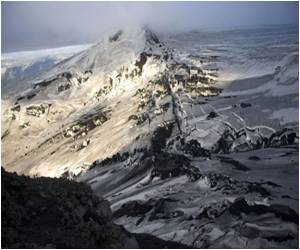Sulphate dust deposits drilled deep from the West Antarctic ice sheet have provided a glimpse into the history of over 2,000 years of volcanic eruptions.

The study incorporated 26 precisely synchronized ice core records collected in an array of 19 sites from across Antarctica and it is the first annually resolved record extending through the Common Era (the last 2,000 years of human history). It involved collaborating researchers from the United States, Japan, Germany, Norway, Australia, and Italy.
The research also found that the two largest volcanic eruptions in recent Earth history (Samalas in 1257 and Kuwae in 1458) deposited 30 to 35 percent less sulfate in Antarctica, suggesting that these events had a weaker cooling effect on global climate than previously thought.
The new record is published in the online edition of Nature Climate Change.
Source-ANI









